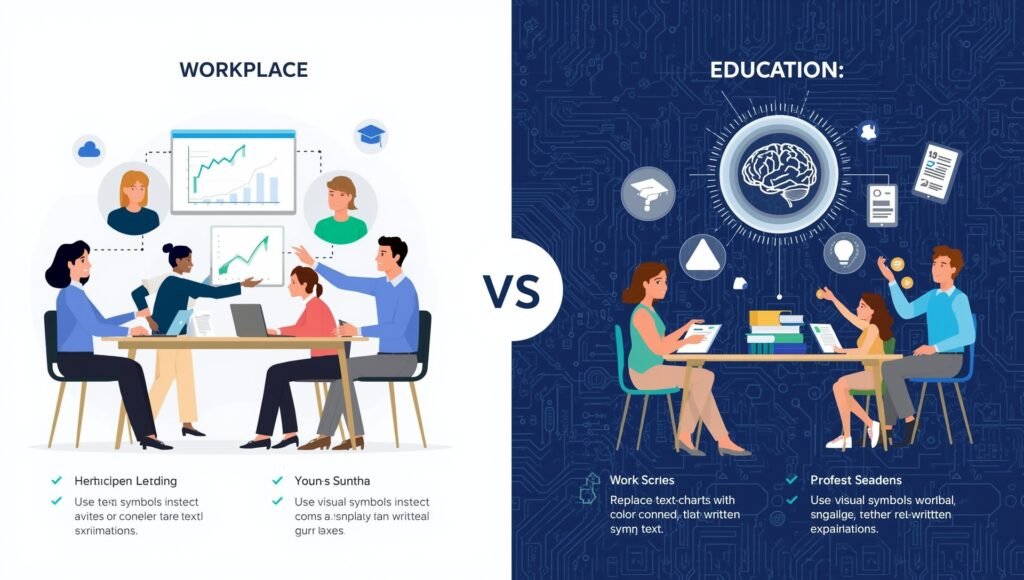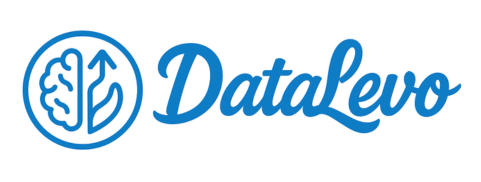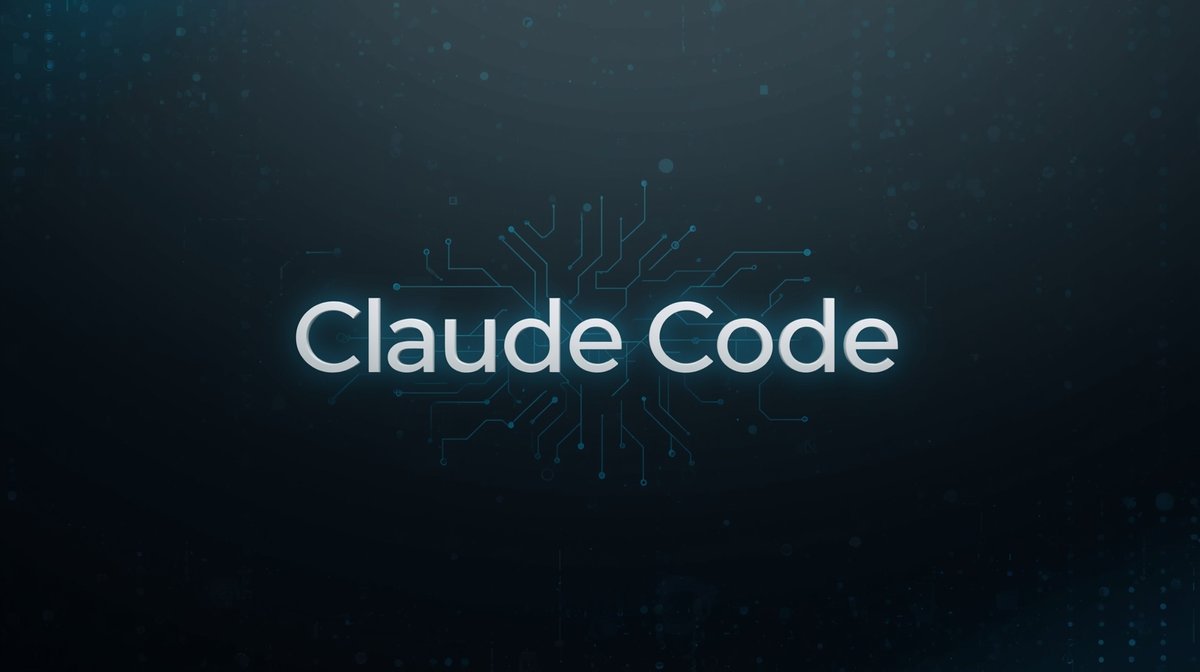Introduction
Organizations worldwide rush to implement artificial intelligence without fully understanding the implications. Companies invest billions in AI technology while educational institutions scramble to integrate smart systems. However, hasty adoption often leads to unexpected challenges and costly mistakes that could have been avoided.
Understanding the pros and cons of AI in workplace and education becomes crucial for successful implementation. While Artificial Intelligence offers remarkable benefits like enhanced productivity and personalized learning, it also presents serious risks including job displacement and privacy concerns. This comprehensive analysis examines both advantages and disadvantages, providing decision-makers with balanced insights needed for informed AI adoption strategies across professional and academic environments.
Current State of AI Integration in Professional and Academic Settings
Artificial intelligence transforms both workplace operations and educational systems at unprecedented speed. Organizations across industries report significant investments in AI technologies, while schools and universities pilot innovative learning platforms powered by machine learning algorithms.
AI Adoption Statistics Across Industries and Educational Institutions:
The global AI market reached $196.63 billion in 2024, with workplace applications accounting for 67% of total investments. McKinsey research reveals that 75% of organizations now use AI in at least one business function, representing a dramatic increase from just 20% in 2017.
Educational AI spending grows even faster, reaching $25.7 billion globally in 2024. Universities report 45% adoption rates for AI-powered administrative systems, while K-12 institutions show 32% implementation across various educational technologies.
Major Companies and Schools Leading AI Implementation:
Microsoft integrates AI across its entire workplace ecosystem through Copilot applications. The company reports 70% productivity improvements in document creation and data analysis tasks among enterprise customers.
Google Workspace uses AI for email organization, meeting transcription, and collaborative document editing. Over 3 billion users benefit from these automated features daily, demonstrating massive scale AI workplace integration.
Stanford University pioneered AI-powered adaptive learning systems that personalize course content for individual students. Their research shows 23% improvement in learning outcomes compared to traditional teaching methods.
Arizona State University implements comprehensive AI systems for student services, from admissions processing to degree planning. The university serves over 150,000 students through AI-enhanced platforms, reducing administrative costs by 35%.
Investment Trends in Workplace and Educational AI Technologies:
Almost all companies invest in AI, but just 1% believe they are at maturity level implementation. This gap highlights the complexity of successful AI integration beyond initial technology adoption.
Venture capital funding for educational AI startups exceeded $2.8 billion in 2024, focusing primarily on personalized learning platforms and automated assessment tools. Workplace AI investments concentrate on process automation, customer service, and data analytics applications.
Advantages of AI in the Workplace
The benefits of AI in the workplace extend far beyond simple task automation. Modern AI systems enhance human capabilities while solving complex business challenges that previously required extensive manual effort.
Enhanced Productivity and Efficiency Gains:
AI workplace automation examples demonstrate remarkable productivity improvements across diverse industries. Automated data entry systems process information 85% faster than human workers while maintaining 99.7% accuracy rates.
Customer service chatbots handle 60-80% of routine inquiries without human intervention, allowing support staff to focus on complex problem-solving. Companies report 40% reduction in response times and 25% improvement in customer satisfaction scores.
Document processing AI analyzes contracts, invoices, and legal papers in minutes rather than hours. Law firms using AI document review show 65% time savings on discovery processes, translating directly to cost reductions and faster client service.
Cost Reduction and Resource Optimization:
Benefits of using ai in business include significant operational cost savings through intelligent resource allocation. Predictive maintenance systems reduce equipment downtime by 35% while extending asset lifecycles through optimized servicing schedules.
AI-powered supply chain management optimizes inventory levels, reducing carrying costs by 20-30% while preventing stockouts. Walmart’s AI systems manage inventory for over 10,000 products across 4,700 stores, generating millions in annual savings.
Energy management AI reduces utility costs by 15-25% through intelligent HVAC control, lighting optimization, and peak demand management. Smart building systems adjust environmental conditions based on occupancy patterns and weather forecasts automatically.
Improved Decision-Making Through Data Insights:
AI workplace decision making leverages vast datasets to identify patterns invisible to human analysis. Financial institutions use AI for credit risk assessment, improving loan approval accuracy by 23% while reducing default rates.
Marketing AI analyzes customer behavior across multiple touchpoints, enabling personalized campaigns that achieve 2-3x higher conversion rates compared to traditional approaches. Netflix’s recommendation engine drives 80% of viewer engagement through sophisticated content matching algorithms.
Sales forecasting AI helps businesses optimize inventory, staffing, and production planning. Companies report 12-18% improvement in forecast accuracy, leading to better resource allocation and reduced operational waste.
24/7 Availability and Scalability:
Unlike human workers, AI systems operate continuously without breaks, vacations, or sick leave. Customer support chatbots provide instant assistance across global time zones, ensuring consistent service quality regardless of location or timing.
AI scalability allows businesses to handle demand spikes without proportional increases in staffing costs. E-commerce platforms process thousands of simultaneous transactions during peak shopping periods using automated systems that scale dynamically.
Cloud-based AI services expand processing capacity automatically based on workload requirements, eliminating the need for expensive infrastructure investments or capacity planning guesswork.
Pros and Cons of AI in Workplace and Education

Educational institutions discover transformative advantages through strategic AI implementation. Personalized learning experiences and administrative efficiency improvements create better outcomes for students while reducing operational burden on educators and staff.
Personalized Learning Experiences:
AI personalized learning benefits extend beyond traditional one-size-fits-all educational approaches. Adaptive learning platforms adjust content difficulty, pacing, and presentation style based on individual student performance and learning preferences.
Carnegie Learning’s MATHia platform personalizes math instruction for over 600,000 students annually. The system identifies knowledge gaps and provides targeted remediation, resulting in 26% greater learning gains compared to traditional textbook-based instruction.
Language learning applications like Duolingo use AI to customize lesson sequences, vocabulary introduction timing, and practice exercise selection. Users show 34% better retention rates compared to conventional language courses through personalized curricula adaptation.
Administrative Efficiency and Resource Management:
Educational AI assessment tools automate grading for multiple-choice tests, essays, and even complex project evaluations. Teachers save 5-8 hours weekly on grading tasks, redirecting time toward lesson planning and student interaction.
Student information systems powered by AI predict enrollment patterns, optimize course scheduling, and identify at-risk students requiring additional support. Universities report 15% improvement in graduation rates through early intervention programs guided by predictive analytics.
AI-powered plagiarism detection systems like Turnitin analyze millions of documents to identify academic dishonesty with 95% accuracy rates. This technology maintains academic integrity while providing educational feedback about proper citation practices.
Enhanced Accessibility for Diverse Learning Needs:
AI accessibility tools break down barriers for students with disabilities or language differences. Speech-to-text systems enable hearing-impaired students to participate fully in classroom discussions and lectures.
Real-time translation AI allows non-native speakers to access educational content in their preferred languages. Google Translate for Education supports over 100 languages, making global educational resources accessible to diverse student populations.
Visual recognition AI describes images, charts, and diagrams for visually impaired students, ensuring equal access to multimedia educational content. These tools integrate seamlessly with existing screen readers and assistive technologies.
Real-Time Assessment and Feedback Systems:
Automated grading systems AI provide immediate feedback on student assignments, enabling faster learning cycles and knowledge reinforcement. Students receive detailed explanations of mistakes within minutes rather than waiting days for teacher reviews.
Learning analytics platforms track student engagement, time-on-task, and comprehension levels across digital learning activities. Educators use this data to identify struggling students early and adjust instruction strategies accordingly.
Intelligent tutoring systems offer personalized hints, explanations, and practice problems based on individual student needs. Research shows 15-25% learning improvement when students receive immediate, targeted feedback compared to delayed traditional grading methods.
Disadvantages and Risks of AI in the Workplace
Despite significant benefits, the disadvantages of ai in the workplace create serious concerns that organizations must address carefully. Implementation challenges, security risks, and human factors present obstacles that can undermine AI initiatives if not properly managed.
Job Displacement and Employment Concerns:
AI job displacement concerns affect millions of workers across industries as automation eliminates routine positions. Oxford Economics predicts 20 million manufacturing jobs could disappear by 2030 due to robotic automation, creating significant unemployment in certain regions.
Administrative roles face particularly high automation risk, with 40% of clerical positions potentially replaceable by AI systems within the next decade. Data entry clerks, bookkeepers, and basic customer service representatives experience the most immediate threats.
However, job transformation often occurs alongside displacement, requiring workers to develop new skills. Companies implementing AI successfully typically invest in employee retraining programs, but not all organizations provide adequate transition support for affected workers.
Privacy and Data Security Issues:
Workplace AI security risks intensify as systems process increasing amounts of sensitive employee and customer data. Data breaches involving AI systems can expose personal information, financial records, and proprietary business intelligence simultaneously.
Employee monitoring through AI raises privacy concerns about workplace surveillance and personal autonomy. Productivity tracking systems analyze keystroke patterns, email content, and application usage, creating potential for abuse by management.
Biometric AI systems used for access control and time tracking collect irreversible personal identifiers. Unlike passwords, biometric data cannot be changed if compromised, creating permanent security vulnerabilities for affected individuals.
Over-Reliance and Skill Deterioration:
Workplace AI over reliance leads to skill atrophy as employees become dependent on automated systems for routine tasks. GPS navigation demonstrates this phenomenon – constant reliance reduces spatial reasoning and map-reading abilities over time.
Critical thinking skills deteriorate when workers habitually accept AI recommendations without independent verification. Financial analysts using algorithmic trading systems may lose ability to perform manual market analysis, creating vulnerability during system failures.
Decision-making autonomy decreases as AI systems provide increasingly sophisticated recommendations. Managers risk becoming approval stamps for algorithmic suggestions rather than exercising independent judgment and leadership skills.
Implementation Costs and Technical Challenges:
AI implementation failures cost organizations millions in wasted resources and lost productivity. Gartner research indicates 85% of AI projects fail to deliver expected business value due to poor planning, inadequate data quality, or unrealistic expectations.
Technical infrastructure requirements for AI systems often exceed initial budget projections by 200-300%. High-performance computing, data storage, and network capacity upgrades create significant unexpected expenses during deployment phases.
Integration complexity with existing business systems creates months of disruption and reduced productivity. Legacy software compatibility issues, data migration challenges, and employee training requirements extend implementation timelines far beyond original estimates.
Educational Challenges and AI Limitations
Educational institutions face unique obstacles when implementing AI systems. Academic integrity concerns, social development issues, and equity challenges require careful consideration to ensure technology enhances rather than hinders educational outcomes.
Academic Integrity and Cheating Concerns:
AI academic integrity concerns escalate as students gain access to sophisticated content generation tools. ChatGPT and similar systems produce essays, solve math problems, and complete coding assignments with quality levels difficult to distinguish from student work.
Traditional plagiarism detection systems struggle to identify AI-generated content, forcing educators to develop new assessment strategies. Take-home assignments become less reliable measures of student learning when AI can complete them effectively.
The fundamental challenge extends beyond detection to educational philosophy – determining whether AI tool usage represents cheating or simply modern research methodology. Clear policies and guidelines remain underdeveloped at most institutions.
Reduced Human Interaction and Social Skills:
Student AI dependency risks include diminished interpersonal communication skills as digital interactions replace face-to-face learning experiences. Online AI tutors cannot replicate the emotional support and mentorship provided by human teachers.
Collaborative learning suffers when students rely on AI systems rather than peer interaction for problem-solving. Group projects lose educational value if AI tools complete tasks that should develop teamwork and communication abilities.
Social-emotional learning becomes challenging in AI-mediated environments lacking human empathy and emotional intelligence. Young students particularly need human role models for proper social development and ethical reasoning skills.
Digital Divide and Accessibility Issues:
Educational AI digital divide exacerbates existing inequalities between well-funded and under-resourced schools. Advanced AI learning platforms require high-speed internet, modern devices, and technical support that many institutions cannot afford.
Rural and low-income school districts lag significantly behind wealthy urban areas in AI implementation, creating disparate educational opportunities. Students without home internet access cannot benefit from AI-powered learning systems outside school hours.
Teacher training needs for AI integration require significant professional development investments. Many educators lack technical skills needed to effectively utilize AI tools, limiting their classroom implementation regardless of available technology.
Teacher Training and Adaptation Requirements:
The challenges of AI in education include massive retraining needs for existing faculty. Teachers must learn to integrate AI tools effectively while maintaining pedagogical best practices and personal teaching approaches.
Resistance to change among experienced educators slows AI adoption and reduces implementation effectiveness. Professional development programs must address both technical skills and philosophical concerns about AI’s role in education.
Ongoing support requirements strain institutional resources as AI technologies evolve rapidly. Schools need dedicated technical staff and continuous training budgets to maintain effective AI integration over time.
Real-World Case Studies and Implementation Examples
Examining successful and failed AI implementations provides valuable insights for organizations considering similar initiatives. These real-world examples demonstrate both the transformative potential and serious pitfalls of AI adoption.
Successful AI Workplace Transformations:
IBM’s Watson for Oncology assists doctors in cancer treatment recommendations by analyzing vast medical literature and patient records. Memorial Sloan Kettering Cancer Center reports 85% agreement rates between Watson suggestions and oncologist decisions, improving treatment consistency.
Unilever revolutionized recruitment through AI-powered candidate screening and assessment. Their system analyzes video interviews, personality tests, and cognitive assessments to identify top talent, reducing hiring time by 75% while improving candidate diversity by 16%.
Amazon’s warehouse automation combines AI with robotics to optimize inventory management and order fulfillment. The company’s AI systems coordinate thousands of robots, reducing order processing time by 50% while improving accuracy to 99.99%.
Educational AI Success Stories:
Georgia State University uses AI chatbots to support student success and reduce dropout rates. Their system answers common questions, reminds students of deadlines, and identifies at-risk students for early intervention, contributing to 5% improvement in graduation rates.
Coursera’s AI-powered course recommendations help 100+ million learners discover relevant educational content. Their machine learning algorithms analyze learning history, career goals, and skill gaps to suggest personalized learning paths, increasing course completion rates by 60%.
Failed Implementations and Lessons Learned:
Microsoft’s Tay chatbot demonstrated AI bias risks when internet users trained it to produce offensive content within hours of launch. This failure highlighted the importance of robust content filtering and ethical AI training methodologies.
Several school districts abandoned AI proctoring systems after students and parents complained about privacy violations and technical malfunctions. These failures emphasize the need for stakeholder consultation and gradual implementation approaches.
Healthcare AI systems have shown bias against minority patients, leading to incorrect treatment recommendations and regulatory scrutiny. These cases illustrate the critical importance of diverse training data and ongoing bias monitoring.
Future Trends and Predictions
Emerging technologies and regulatory developments will shape the next phase of AI integration in both workplace and educational environments. Understanding these trends helps organizations prepare for coming changes and opportunities.
Emerging AI Technologies in Work and Education:
Generative AI tools beyond text creation will revolutionize content development across industries. Video generation, code creation, and design automation will expand AI’s impact on creative and technical professions significantly.
Augmented reality AI will merge digital and physical learning environments, creating immersive educational experiences previously impossible. Students will interact with historical figures, manipulate molecular structures, and explore virtual laboratories through AI-powered AR systems.
Emotional AI systems will recognize and respond to human emotional states, personalizing interactions based on mood, stress levels, and engagement patterns. These technologies promise more empathetic AI assistants but raise additional privacy and manipulation concerns.
Policy and Regulatory Developments:
Government regulations for AI in education and workplace settings will proliferate as policymakers address privacy, bias, and safety concerns. The EU’s AI Act sets precedent for comprehensive AI governance frameworks globally.
Professional licensing requirements may emerge for AI system developers and operators, similar to current engineering and medical certifications. These standards will ensure competent AI implementation and provide accountability mechanisms.
Skills Gap and Workforce Preparation:
Future workforce preparation must emphasize AI collaboration skills rather than competition with automated systems. Workers need training in prompt engineering, AI output evaluation, and human-AI workflow optimization.
Educational curricula will integrate AI literacy as a fundamental skill alongside traditional subjects. Students must understand AI capabilities, limitations, and ethical implications to participate effectively in AI-augmented society.
Conclusion
The comprehensive analysis of pros and cons of AI in workplace and education reveals a complex landscape of opportunities and challenges requiring careful navigation. While AI delivers remarkable benefits including enhanced productivity, personalized learning, and operational efficiency, it simultaneously presents serious concerns about job displacement, privacy, and social equity.
Success in AI implementation depends on balanced approaches that maximize benefits while proactively addressing risks and limitations. Organizations must invest in employee training, ethical guidelines, and gradual deployment strategies rather than rushing toward full automation. Educational institutions need clear policies, teacher support, and equity considerations to ensure AI enhances rather than replaces human learning experiences.
The future belongs to organizations that view AI as a collaborative tool augmenting human capabilities rather than a replacement for human intelligence and creativity. By understanding both advantages and disadvantages, decision-makers can develop thoughtful AI strategies that benefit all stakeholders while maintaining human values and social responsibility.
FAQs
1. What are the pros and cons of AI in the workplace?
Pros include increased productivity, cost reduction, and 24/7 availability. Cons involve job displacement concerns, privacy risks, and over-reliance on technology. Success depends on thoughtful implementation and employee support.
2. What are the 5 pros and 5 cons of AI?
Pros: enhanced productivity, cost savings, better decision-making, scalability, personalization. Cons: job displacement, privacy concerns, implementation costs, bias risks, skill deterioration. Balance varies by specific application and context.
3. What are the negative impacts of AI on education?
Academic integrity challenges, reduced human interaction, digital divide issues, teacher training requirements, and student over-dependence on technology. Privacy concerns and equity gaps also create significant challenges.
4. What are the disadvantages of generative artificial intelligence in learning and teaching?
Cheating facilitation, critical thinking reduction, content authenticity questions, assessment validity issues, and decreased original thought development. Teachers struggle to evaluate genuine student
5. What are the three cons of AI?
Job displacement threats, privacy and security risks, and implementation complexity with high failure rates. These fundamental challenges affect most AI applications across different industries and contexts.
6. What is AI in education?
AI in education includes personalized learning systems, automated grading, intelligent tutoring, administrative automation, and predictive analytics for student success. These technologies adapt instruction and support based on individual student needs.



